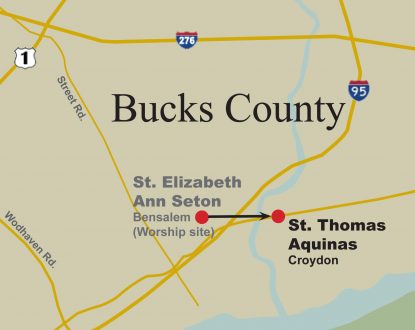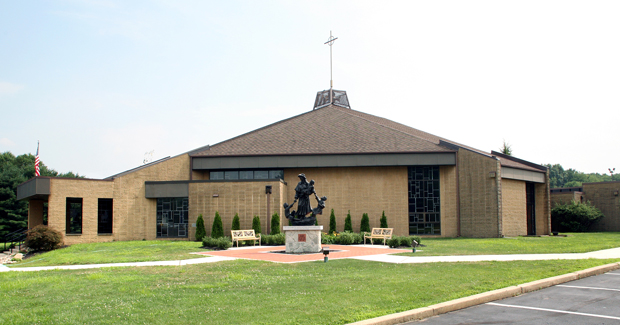 Last April the Vatican’s Congregation for Clergy upheld the decision by Archbishop Charles Chaput in 2014 to merge St. Elizabeth Ann Seton Parish in Bensalem with nearby St. Thomas of Aquinas Parish at its Croydon campus.
Last April the Vatican’s Congregation for Clergy upheld the decision by Archbishop Charles Chaput in 2014 to merge St. Elizabeth Ann Seton Parish in Bensalem with nearby St. Thomas of Aquinas Parish at its Croydon campus.
But that ruling by the Vatican itself was appealed by some former St. Elizabeth parishioners. They requested that the decision by revoked.
In a letter to Archbishop Chaput dated Oct. 25, Cardinal Benjamino Stella, prefect of the Congregation for Clergy, found that the appellants “provided no canonical (church law) foundation for revocation.”
“Therefore,” Cardinal Stella wrote, the congregation “decrees that the request for revocation of our decree of 20 April, 2016, be rejected.”
The cardinal’s letter came in reply to a May 10 letter written by the legal advocate of the parishioners’ group, Philip Gray, requesting that the decision to merge their parish be reversed.
[hotblock]
While Cardinal Stella noted Gray’s letter “raised genuine questions … causing further study to be carried out,” it is clear from his letter that the merger into St. Thomas Aquinas Parish will not be reversed.
The parishes began their merger July 1, 2014.
While St. Elizabeth’s no longer exists as a parish and all assets and liabilities were assumed by St. Thomas Aquinas, St. Elizabeth Church still functions as a worship site of the parish.
The pastor, Father David Fernandes, celebrates the 9 a.m. Mass each Sunday morning at St. Elizabeth’s in addition to weekend Masses at St. Thomas. The two churches are located only little more than a mile apart, across I-95 in lower Bucks County.
(See CatholicPhilly.com’s 2014 coverage of the parish merger announcement.)
The merger of St. Elizabeth and St. Thomas followed the course as all such mergers in the archdiocese’s pastoral planning process, which began in 2010. Plans concerning potential closures or mergers of parishes are presented by the pastors and parish leaders in a given geographic area, studied with the archdiocesan Strategic Planning Committee, submitted for consultation and approval of the archdiocesan Council of Priests and finally presented to Archbishop Chaput, who makes the final decision on the plan.
Church (canon) law allows for parishioners to appeal decisions to close or consolidate a parish. The canonical review mainly considers whether church legal process has been properly followed with respect to all parties.
In a three-page decree issued April 20, the Congregation for Clergy determined in its review of the case that the “minimal standard” for assessing the factors affecting the parishes “was studied with diligence by the officials of the archdiocese.”
In the end the consultative nature of the pastoral planning process in the Philadelphia Archdiocese precluded a reversal of the decision to merge the parishes.
St. Thomas Aquinas Parish had 3,901 registered parishioners and 1,432 households – a 17 percent increase over the past five years — under the care of one priest in 2015, the latest available data.
PREVIOUS: Thanks to foundation’s aid, Catholic schools are ‘saving lives’ in Phila.
NEXT: Bensalem soccer league, uniting Hispanic families, seen as model for U.S.




Share this story